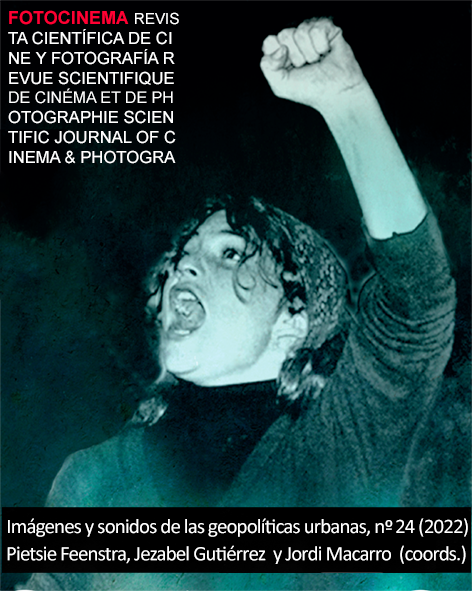Frances
Frances
DOI:
https://doi.org/10.24310/Fotocinema.2022.vi24.13708Keywords:
EnglishAbstract
Science fiction has always been closely linked to utopia and shows distant planets, strange creatures and unknown technology in order to make the viewer think about a very familiar reality, our life on Earth and its future. This is why cities, a central element of our life and utopia alike, play such an important role in the works of science fiction. An excellent example is Luc Besson’s film Valerian and the City of a Thousand Planets (2017), on which our article focuses. We analyze how the film’s different cities (the Pearls’ idyllic villages, the invisible city in the desert representing a relentless capitalism and above all the gigantic interplanetary metropolis Alpha) serve as a starting point for reflections about the organization of our future society. The remarkable presence of the grotesque in the film will be of special interest for our observations. One central characteristic of the grotesque, the transgression of all borders, will finally lead us to the work’s transnational dimension, which is of capital importance for Besson’s film.
Downloads
Metrics
Publication Facts
Reviewer profiles N/A
Author statements
Indexed in
-
—
- Academic society
- N/A
- Publisher
- Universidad de Málaga
Downloads
Published
How to Cite
Issue
Section
License
All contents published in Fotocinema Revista científica de cine y fotografía are protected under the Creative Commons Attribution-NonCommercial-ShareAlike 4.0 International (CC BY-NC-SA 4.0) license. All about this license is available in the following link: <http://creativecommons.org/licenses/by-nc-sa/4.0>
Users can copy, use, redistribute, share and exhibit publicly as long as:
- The original source and authorship of the material are cited (Journal, Publisher and URL of the work).
- It is not used for comercial purposes.
- The existence of the license and its especifications are mentioned.
There are two sets of authors’ rights: moral and property rights. Moral rights are perpetual prerogatives, unrenounceable, not-transferable, unalienable, imprescriptible and inembargable. According to authors’ rights legislation, Fotocinema. Revista científica de cine y fotografía recognizes and respects authors moral rights, as well as the ownership of property rights, which will be transferred to University of Malaga in open access. The property rights are referred to the benefits that are gained by the use or the dissemination of works. Fotocinema. Revista científica de cine y fotografía is published in an open access form and it is exclusively licenced by any means for doing or authorising distribution, dissemination, reproduction, , adaptation, translation or arrangement of works.
Authors are responsable for obtaining the necessary permission to use copyrighted images.














13.png)



